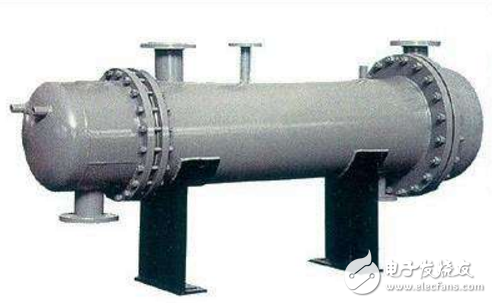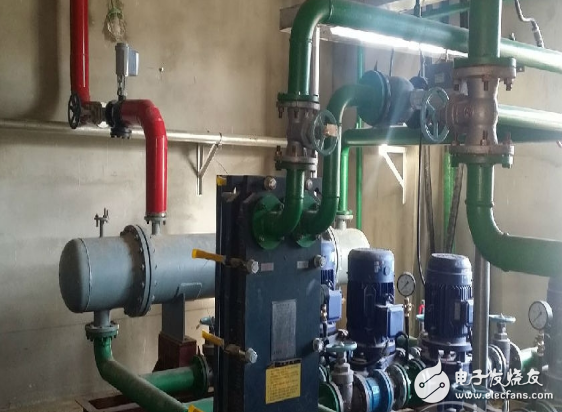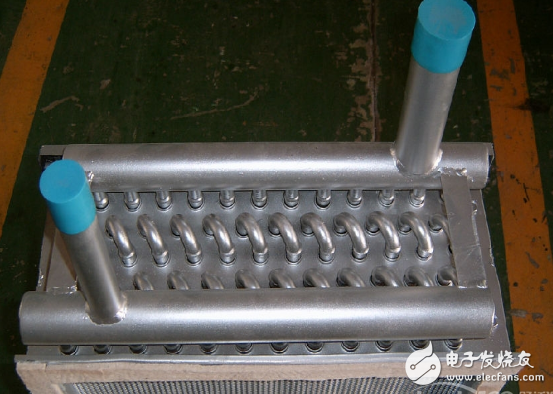The steam heat exchanger is a highly efficient device that effectively transfers heat from steam to air, making it ideal for various industrial heating applications. By utilizing steam as a heat carrier, it can deliver large amounts of thermal energy to drying and processing equipment. In modern industries, steam has become a preferred medium due to its versatility and efficiency.
**First, the Structure of the Steam Heat Exchanger**
The core component of the steam heat exchanger is the steel-aluminum composite finned tube. This advanced design minimizes thermal resistance, ensuring superior heat transfer performance. The steel pipe provides structural strength, while the aluminum fins enhance thermal conductivity. This combination not only improves heat transfer but also prevents direct contact between the metal and air, reducing corrosion risks. Additionally, the smooth surface of the fins reduces air resistance compared to traditional wound types. The compact structure and large heat transfer area make it easy to clean and maintain, contributing to long-term reliability.

The steam heat exchanger is designed as a tube-and-fin type, which maximizes heat transfer efficiency through enhanced surface area and optimized airflow.
**Second, the Working Principle of the Steam Heat Exchanger**
The steam enters the core and is directed at high speed toward the small holes along the side wall. As the steam flows, it absorbs kinetic energy and pushes water in a tangential direction, creating a swirling motion. This rotation helps distribute the steam evenly and reduces noise. The controlled flow ensures stable operation, with minimal turbulence and sound levels below 50 dB. The rotating water then moves along the casing walls, transferring heat efficiently before being discharged through the upper and lower holes. This continuous cycle maintains a uniform temperature in the water tank, improving overall heating performance.

**Fourth, the Main Advantages of the Steam Heat Exchanger**
1. **High Efficiency and Energy Saving**: With a thermal efficiency of up to 99%, the steam heat exchanger dissolves steam directly into the water, even with a low pressure difference (as low as 0.04 MPa), minimizing heat loss.
2. **High Hot Water Temperature**: It can produce hot water up to 98°C in open tanks and 150°C in pressurized vessels, with a maximum operating pressure of 1.6 MPa.
3. **Low Vibration and Noise**: Designed with internal noise reduction features, it operates quietly, with noise levels under 50 dB, enhancing the working environment.
4. **Low Investment Cost**: By directly using steam in the water tank, it eliminates the need for additional pumps or equipment, saving on installation costs.
5. **Easy Operation and Maintenance**: Separate control of water and steam allows for repeated heating and precise temperature regulation, making it user-friendly.
6. **Durable and Long-Lasting**: Made entirely of stainless steel, it requires no frequent maintenance and offers a long service life.
**5. Installation and Usage Instructions for the Steam Heat Exchanger**
1. The unit should be installed using standard flanges, ideally placed in the geometric center of the tank, approximately 200 mm above the bottom and 200 mm away from the sides.
2. Connect the steam line via flange, ensuring it is securely fastened and aligned to prevent movement. When multiple units are used, arrange them evenly.
3. If the steam line contains debris, install a filter to prevent clogging of the nozzles.
4. Use a YWQ-type temperature and level controller for optimal water temperature and level management.
5. Ensure the pipeline diameter is equal to or larger than the nominal size of the heat exchanger. For parallel installations, the total cross-sectional area must match.
6. Install a check valve near the steam line to prevent water backflow when the system is shut down.
Nordy Dry specializes in the production of steam heat exchangers and radiators. Our factory is equipped with advanced technology, skilled engineers, and comprehensive testing systems. We focus on manufacturing steam heaters, condensers, mixers, and dryers, serving industries such as chemical, food, biotech, and pharmaceutical. Our commitment to quality, customer satisfaction, and innovation has earned us a strong reputation in the market.
**6. What Are the Direct Heat Exchange Systems for Steam Heat Exchangers?**
Steam heat exchangers use several direct heat exchange systems, including:
1. **Steam Heated Ejector**: Requires a certain pressure, is simple in design, cost-effective, and less prone to scaling. However, it is not commonly used in HVAC systems due to potential damage.
2. **Steam Mixer**: Although effective, it can cause issues in heating and cooling systems, leading to reduced efficiency.
3. **Spray Heat Exchanger**: Ideal for low-pressure steam, but may be prone to clogging from water debris, requiring regular maintenance.
4. **Thermal Sensing Heat Exchanger Unit**: Offers stable operation, automation capabilities, and ease of use. It is a cost-effective and reliable choice for many industrial applications.

HP Fortis 14 G11 Chromebook
hp fortis 14 g11 Chromebook parts; hp fortis 14 g11 Chromebook keyboard; hp fortis 14 g11 replacement parts
S-yuan Electronic Technology Limited , https://www.syuanelectronic.com